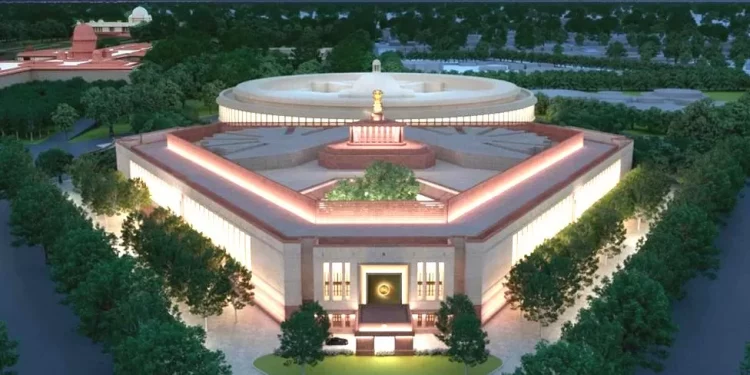The inauguration of the country’s new Parliament Building May 28 should have been an occasion for national celebration, but it got mired in ugly political bickering and a slugfest between the ruling BJP and an Opposition combine of 19 parties. For the unseemly turn of events both sides contributed their share of acrimonious, confrontationist politics that should have been kept out of the construction of the seat of parliamentary democracy. The Opposition parties boycotted the programme which presented a spectacle too familiar to the people who have been made to witness at sickening intervals walkouts and boycotts of parliamentary proceedings by the Opposition and the ruling alliance’s reluctance to allow debates on issues that have potential to put it on the defensive. That the same tactic was followed even before sessions could start in the new Parliament building does not augur well for democracy in India.
The whole event was turned into a crude political showmanship from the beginning of the project. The ruling party did not rise above narrow politics as it did not take the Opposition into confidence about the construction where the soul of democracy would supposed to reside. It was part of the government’s ambitious project to develop the Central Vista complex in the capital replacing colonial-era buildings. The Narendra Modi-government had been accused of rebuilding the nation’s corridors of power in its own image as part of their nationalistic political agenda. Launching the project in 2020, Modi had said the new parliament building would “become a witness to the creation of a self-reliant India”. The Central Vista project, which is to cost over $2.4bn, also involves building a new government secretariat and a new prime minister’s residence and office. The government was charged with a lack of transparency after the project was awarded to architect Bimal Patel, who is from Modi’s home state of Gujarat and has been granted some of the most high-profile government projects in recent years.
The irony of the inauguration of the new parliament building is that the materials and designs for the structure had been brought in from all over India to reflect the country’s cultural diversity and different architectural styles, including marble from Rajasthan and teak from Maharashtra, but it was a one-sided show by the BJP, bereft of the involvement of others.
Given the country’s existing political climate it was understandable that the BJP-government would indulge in political posturing to enhance its image and that of its mascot, the Prime Minister. This is why the present President, who is not only the first citizen and head of state but also a woman and added to that from an indigenous tribe (adivasi) from the eastern part of the country, was denied the opportunity of contributing either to lay the foundation stone or inaugurate the building. The PM represents the executive head and as such the government should have let the President of the Union inaugurate the new Parliament building. The government’s role should have ceased after the construction was over. But, the brand of politics that has been on display, it was a foregone conclusion that the ruling party would not let slip this occasion loaded with, what they must consider, cosmic symbolic value.
The ruling BJP committed the second wrong by coinciding the inauguration with the birth centenary of a controversial figure known as Savarkar. He could be an icon for the saffron party but his actions since he was incarcerated in the Andamans cellular jail by the British have made many question his credentials as a freedom fighter. Such a figure should not have been associated with the inauguration of a building that stands for the country as an independent democracy.
The Opposition, by not attending the programme has correctly taken the stand to demonstrate protest to an icon that should have been shown as all encompassing and inclusive in attitude of all political thoughts that exist on this soil.
The irritation caused by the brazen and conspicuous presence of some Hindoo priests may not upset everyone. However, there is great logic behind the argument by some sections, especially modern city planners, who suggest that the whole Central Vista could have been a brand new city located and developed adjacent to New Delhi. The cost involved would have been similar. A totally new location would have enabled new accommodation to the Parliament, Central Secretariat, Prime Minister’s bungalow as well as new residences for Ministers, Members of Parliament and also bureaucrats with the latest, global standard waste management, security, water supply and a generally healthier environment with space for inhabitants to have enough physical activities, new green areas (now lost in these constructions) could have been aesthetically designed and created away from the presently unhealthy highly polluted New Delhi.
Sadly a great opportunity has, once again, eluded this country because of the petty egos of some individuals.






































